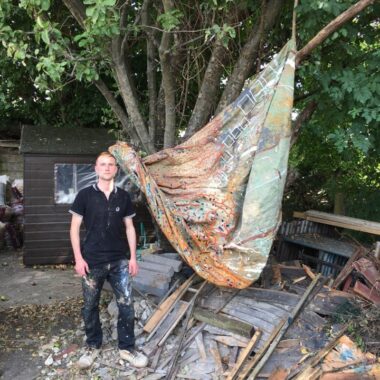Edited by Sandra Crisp LG
Sandra Crisp LG: “Elements hidden behind today’s mass communication systems including recycled copper alongside carpet underlay have previously featured within your practice and 2013 MA show at Chelsea College of Arts. More recently ceramic sculpture and pottery are punctured with holes, and often threaded with copper metal wire.“2023 saw the arrival of a brand-new kiln for your studio. Meanwhile, on TV Channel 4’s 2024 The Great Pottery Throw Down we see you playing with ‘a ton of clay’ and making plates, dinner sets and fabulous gluggle jugs under pressure of the clock.“It will be great to hear more detail about any of the processes within your practice, as long as isn’t top secret!”

In a previous life, just married, we lived in Silicon Valley and I worked for a microchip company. I saw the silica wafers ready for the etching machines, and they were beautiful. These round black disks become microchips, the keys to all our digital communications, so replicating them in basic mud seemed primal and perverse, and fun. So the work Silica Discs was born.
Silica platters, 300 cm x 45 cm x 45 cm at ‘In the dark II’ exhibition at The Cello Factory, London. These stoneware discs are inspired by the silica wafers I used to photograph in the clean rooms of Silicon Valley before they got etched into microchips. The design references the micronelectroscope images of the surface of a chip. They were designed in monochrome to allow colours and images from other artworks to be projected on to them.
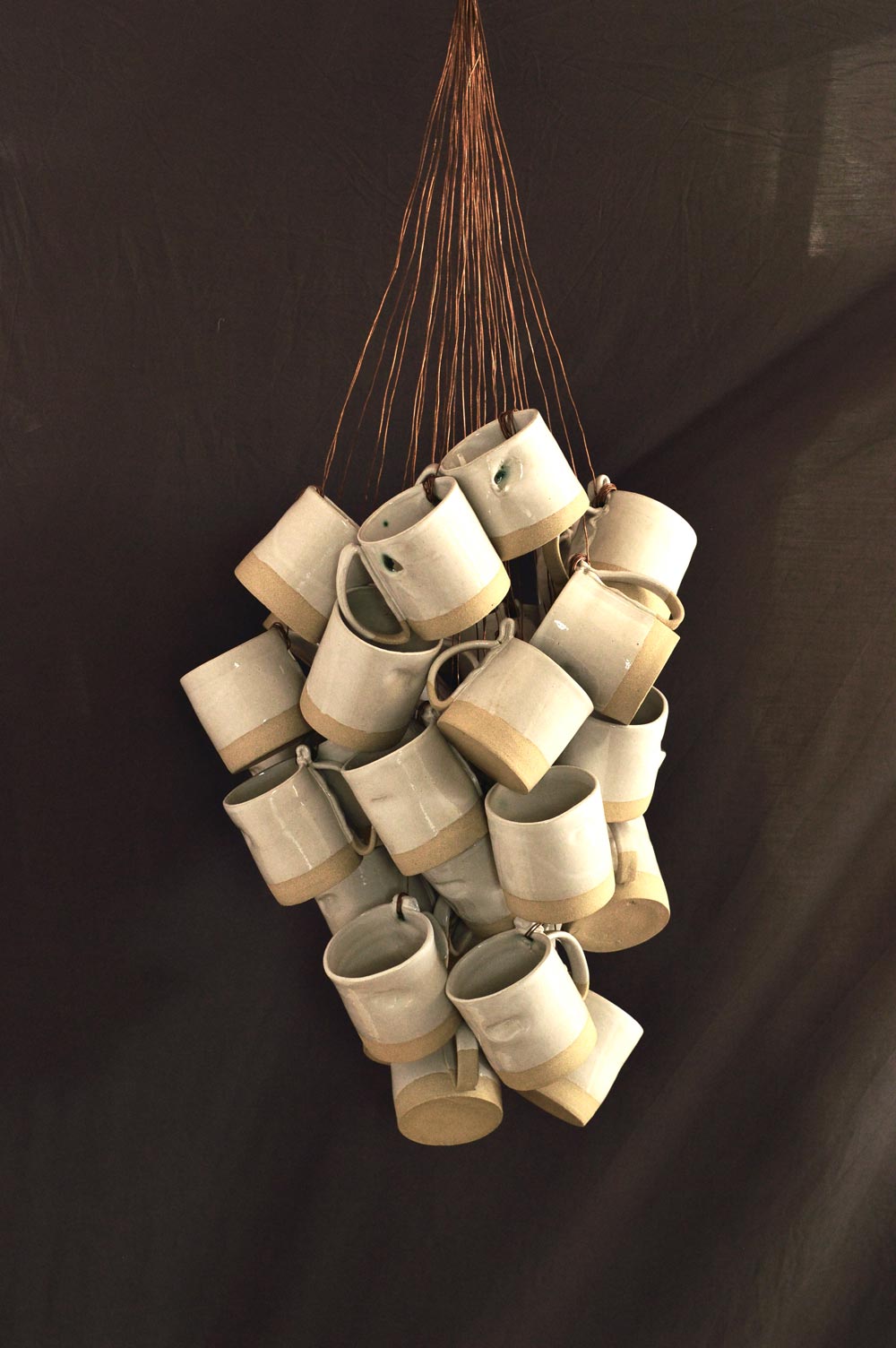
‘The Service’, 2020, stoneware and salvaged copper, made in response to my mum’s funeral during lockdown when we were allowed 30 mourners only. Each of the 30 mugs has been visibly held too tightly, some to the point of becoming unsuitable for use. They are connected by salvaged copper wire.
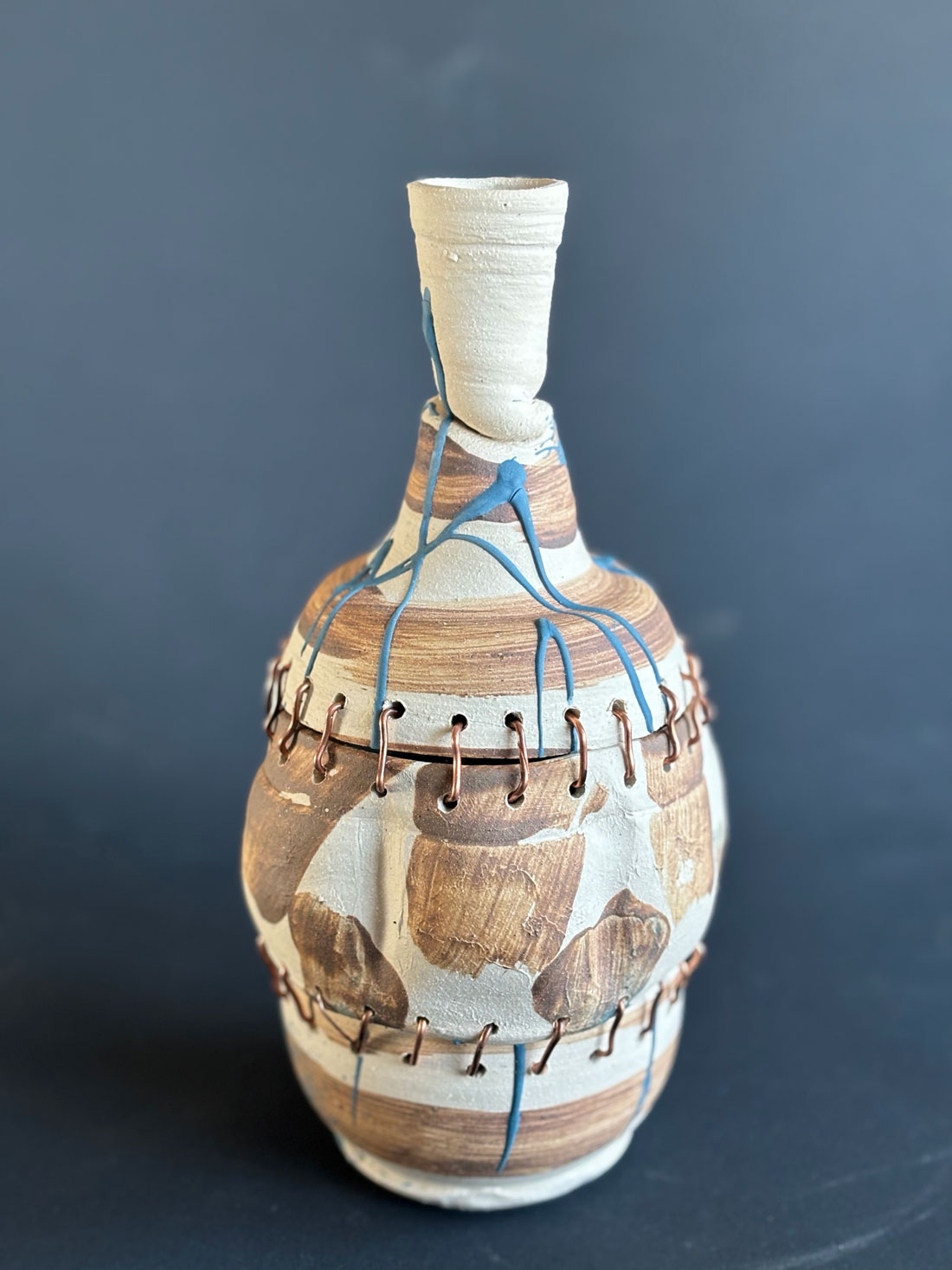
I learned to throw in a very precise production pottery atmosphere which was great for learning the fundamentals of making with clay. A year ago I spent a week studying with Jem Steward in Ross on Wye at a workshop which blew the doors off what I knew and opened the way to experimenting more with surface and, form. I began working on constructed forms such as this ‘Component Bottle 3’
Mugs are easily accessible forms of tactile artwork that has a customary place in people’s lives. I make most of my mugs very quickly, leaving makers marks and imprints on them, as I imagine the hands that will cradle the vessel down the line, and the human connection that evokes.
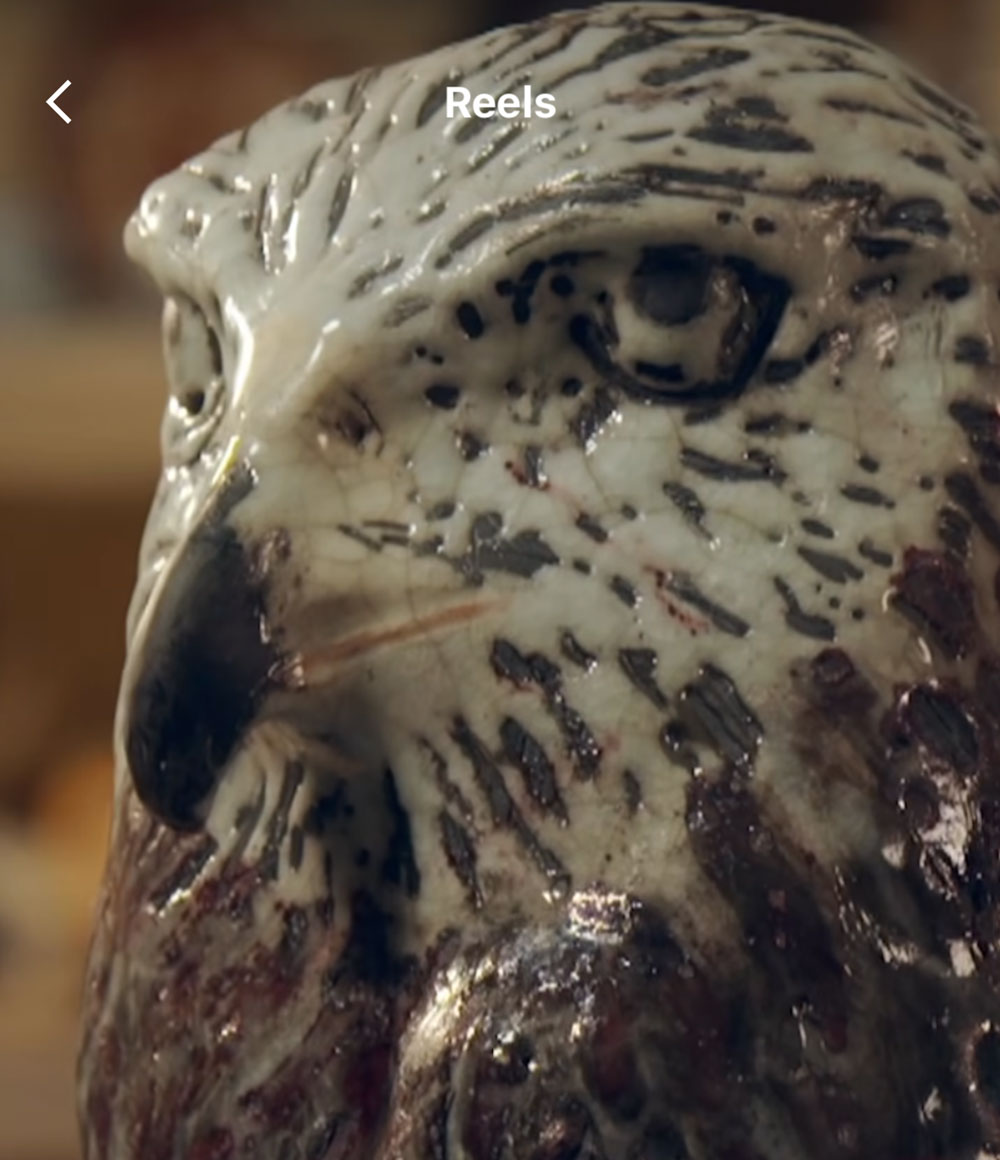
During the filming of The Great Pottery Throw down we were challenged to work with different clays and different techniques, including paper clay and Raku firing, which require very specific skills. Sculpting an animal bust for Raku week was very unfamiliar to me, but something about the physicality of the making, and also something about birds really stuck with me, and it is a them I am exploring more in my studio. I’m still trying to understand what it is about birds- the most commonly encountered wild animal? Communicate with song? Freedom and an overview?
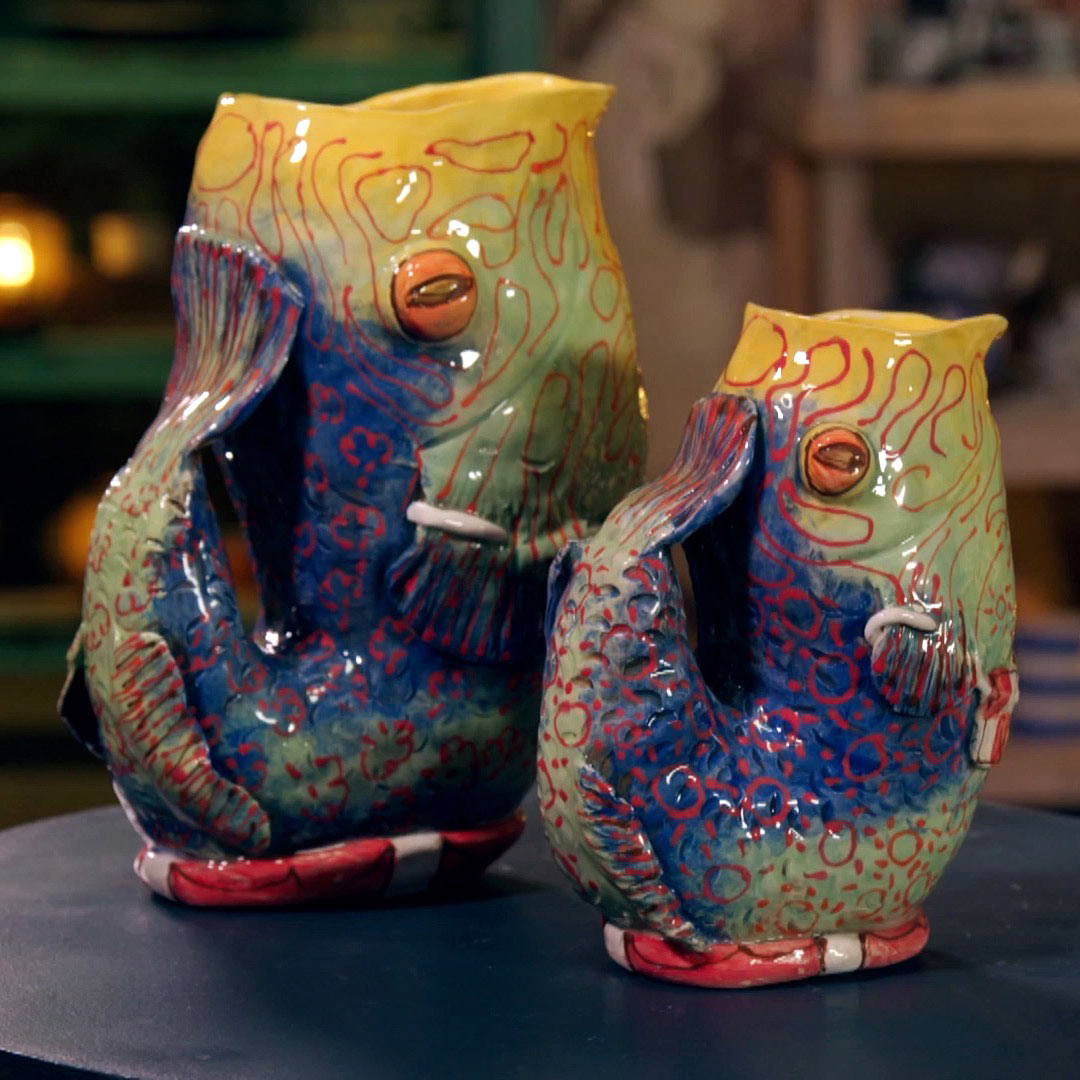
The second episode challenged us to coil build gluggle jugs, which was also a new technique to me. I think my sculpture practice helped me to understand the mechanics of the gluggle quite quickly and I used decorative motifs and, colours in my own way. As soon as I heard that I’d been accepted onto the show I ordered a tester set of underglazes because I had absolutely none! Painting and mark making have never been part of my practice despite the sketch books I keep. I layered the colours using sponges and a needle nosed bottle, which felt more accessible to me than using brushes, but I’m determined to overcome my fear of the painting- I realise it’s just a matter of practice!
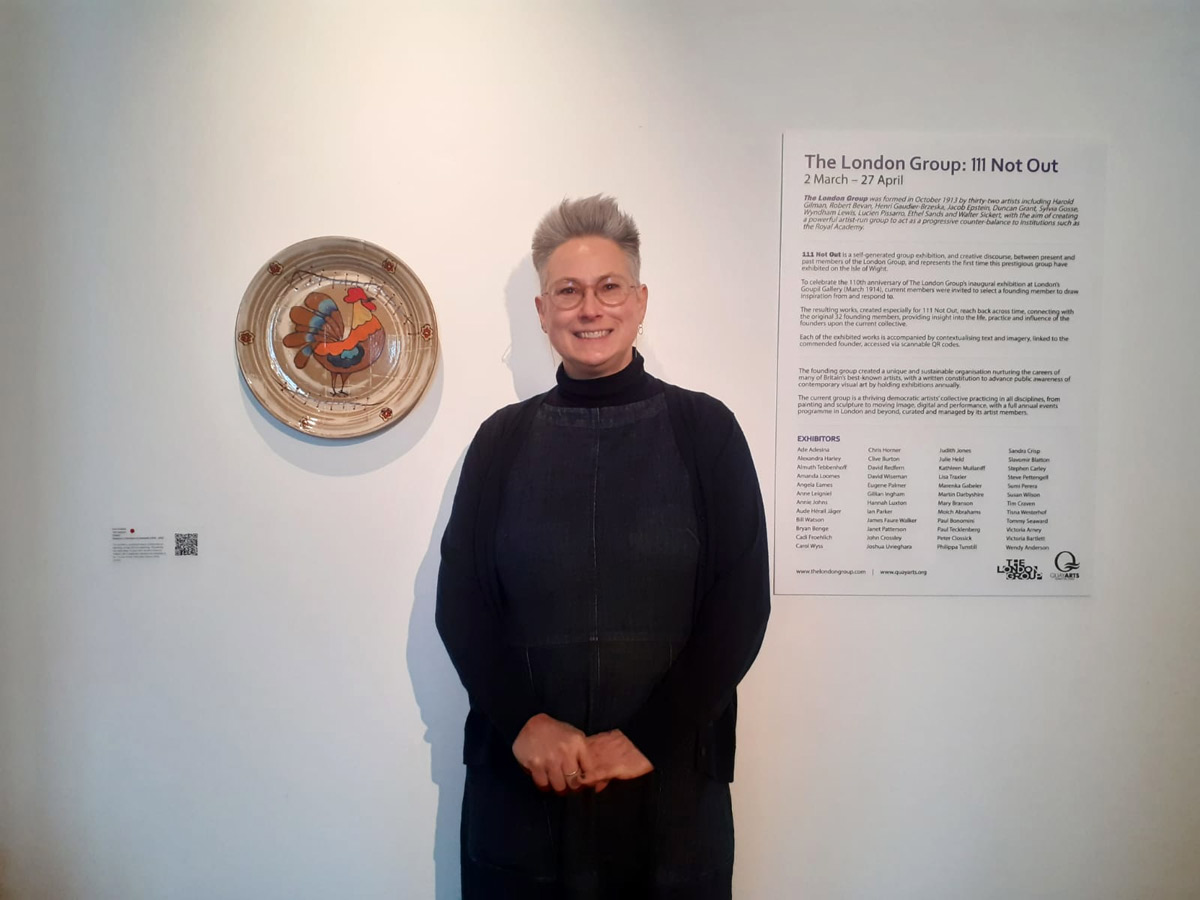
.
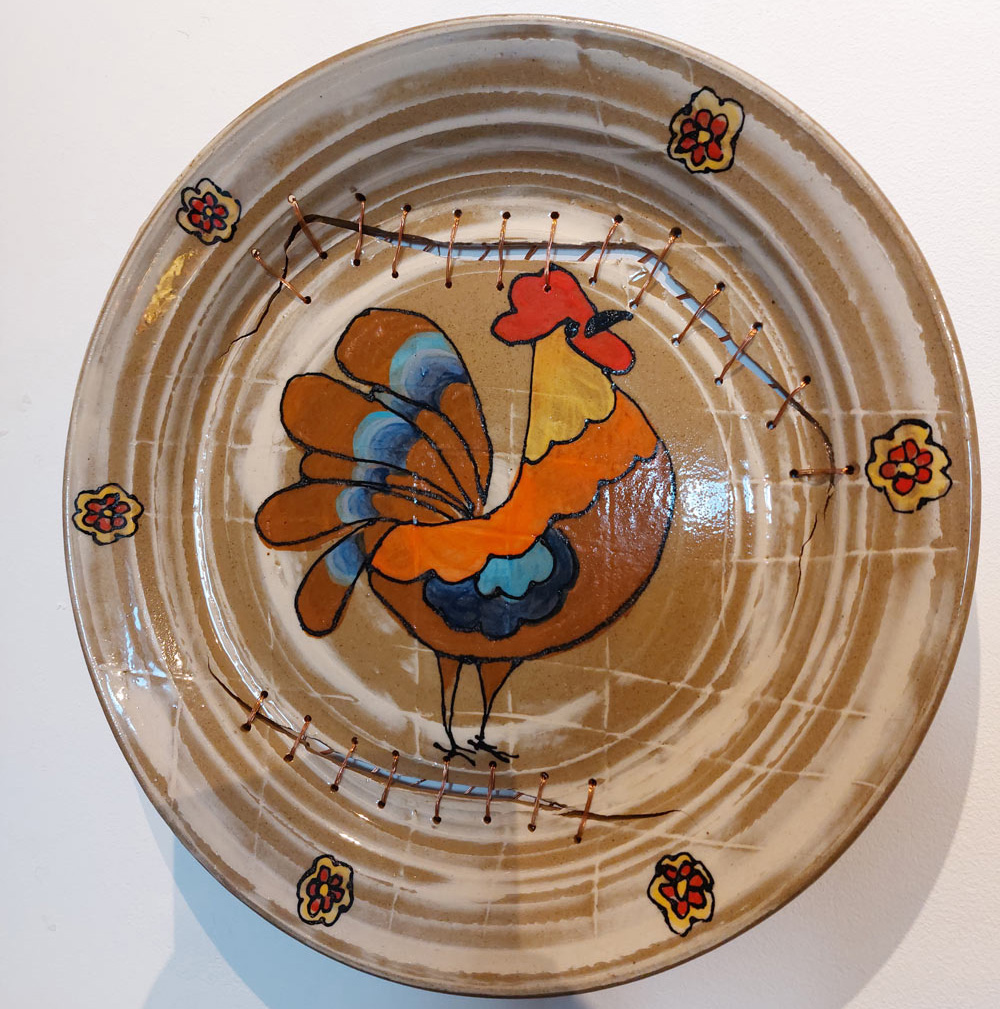
‘The Cockerel’, 2024, stoneware and salvaged copper. Made in response to inaugural The London Group member, Stanislawa de Kolkosova’s work for the London Group exhibition 111 Not Out, Quay Arts, Isle of Wight. This plate cracked during the making, but retained it’s integrity through both firings. The loving and optimistic act of connecting the sections back together celebrates my hand in the making.
.
Cadi Froehlich LG, 2024
cadifroehlich.com
Coming up:
- Next up 23 March 2024 with the Makers Market back at the Gladstone Pottery Museum in Stoke-on-Trent where we filmed the Throw Down
- A curated Open House in the Brighton Festival for the first 3 weekends in May- I’ll be there for the first two.
- Celebrating Ceramics at Waterperry Gardens, near Wheatley, Oxford is at the end of July
Anyone can use the discount code EXHIB24 to get a ticket for £5 instead of £14 - Craft in Focus at Hever Castle will be in September
- Some smaller pieces available online at cadiartworks.bigcartel.com
Other applications are pending, but the calendar is looking exciting and full of more new opportunities, including some weekend workshops TBA.
My Great Pottery Throwdown sketchbook
.






